
Mount Vernon is a census-designated place (CDP) and unincorporated community in Fairfax County, Virginia, United States. The population was 12,416 at the 2010 census. Primarily due to its historical significance and natural recreation and beauty, the Mount Vernon area receives over one million tourists each year.

Mount Vernon is the former plantation of Founding Father, commander of the Continental Army in the Revolutionary War, and the first president of the United States George Washington and his wife, Martha. An American landmark, the estate lies on the banks of the Potomac River in Fairfax County, Virginia. It is located south of Washington, D.C., and Alexandria, Virginia, and is across the river from Prince George's County, Maryland.

George Washington Parke Custis was an American plantation owner, antiquarian, author, and playwright. His father John Parke Custis was the stepson of George Washington. He and his sister Eleanor grew up at Mount Vernon and in the Washington presidential household.

Eleanor Parke Custis Lewis, known as "Nelly", was a granddaughter of Martha Washington and a step-granddaughter of George Washington.
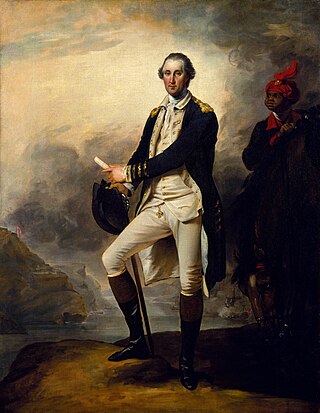
The history of George Washington and slavery reflects Washington's changing attitude toward the ownership of human beings. The preeminent Founding Father of the United States and a hereditary slaveowner, Washington became increasingly uneasy with it. Slavery was then a longstanding institution dating back over a century in Virginia where he lived; it was also longstanding in other American colonies and in world history. Washington's will provided for the immediate emancipation of one of his slaves, and additionally required his remaining 123 slaves to serve his wife and be freed no later than her death, so they ultimately became free one year after his own death.

John Parke Custis was an American planter. He was a son of Martha Washington and stepson of George Washington.
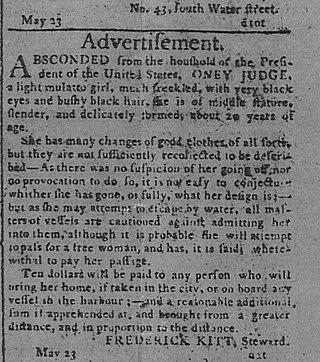
Ona "Oney" Judge Staines was a biracial woman who was enslaved by the Washington family, first at the family's plantation at Mount Vernon and later, after George Washington became president, at the President's House in Philadelphia, then the nation's capital city. In her early twenties, she absconded, becoming a fugitive slave, after learning that Martha Washington had intended to transfer ownership of her to her granddaughter, known to have a horrible temper. She fled to New Hampshire, where she married, had children, and converted to Christianity. Though she was never formally freed, the Washington family ultimately stopped pressing her to return to Virginia after George Washington's death.

Nellie May Quander was an incorporator and the first international president of Alpha Kappa Alpha Sorority, Incorporated. As president for several years, she helped expand the sorority and further its support of African-American women at colleges and in communities. The sorority established a scholarship endowment in her name. The legacy of the sorority has continued to generate social capital for over 112 years.
Hercules Posey was an enslaved African owned by George Washington, at his plantation Mount Vernon in Virginia. "Uncle Harkless," as he was called by George Washington Parke Custis, served as chief cook at the Mansion House for many years. In November 1790, Hercules was one of eight enslaved Africans brought by President Washington to Philadelphia, Pennsylvania, then the temporary national capital, to serve in the household of the third presidential mansion.
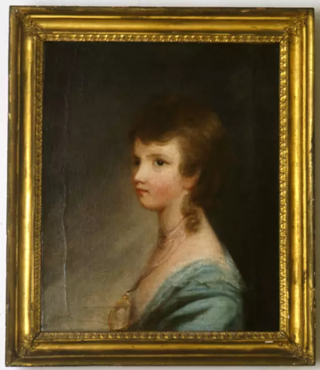
Martha Parke Custis Peter was a granddaughter of Martha Dandridge Washington and a step-granddaughter of George Washington.
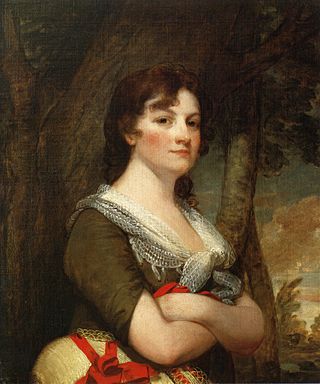
Elizabeth (Eliza) Parke Custis Law was the eldest granddaughter of Martha Dandridge Washington and a step-grandchild of George Washington. She married Thomas Law, the youngest son of the late bishop of Carlisle, England, and an experienced administrator with the East India Company.

Bushrod Washington was an American attorney and politician who served as Associate Justice of the Supreme Court of the United States from 1798 to 1829. On the Supreme Court, he was a staunch ally of Chief Justice John Marshall. Washington was a co-founder and president of the American Colonization Society, which promoted the emigration of freed slaves to Africa. The nephew of American Founding Father and President George Washington, he inherited his uncle's papers and Mount Vernon, taking possession in 1802 after the death of Martha Washington, his uncle's widow, and with Marshall's help, published a biography of the first president.
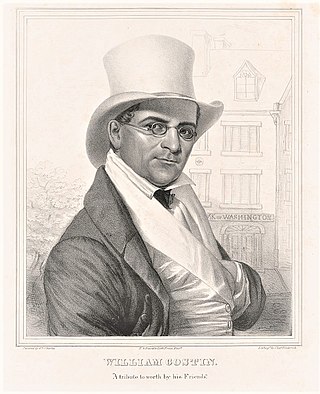
William Costin was a free African-American activist and scholar who successfully challenged District of Columbia slave codes in the Circuit Court of the District of Columbia.
Lund Washington (1737–1796) was a distant cousin of George Washington who served as steward of the Mount Vernon estate during the American Revolution.

West Ford was the caretaker and manager of Mount Vernon, which had been the home of George Washington. Ford also founded Gum Springs, Virginia near Mount Vernon. He was a man of mixed-race, and possibly of Washington descent.
Sarah Johnson was an African American woman who was born into slavery at Mount Vernon, George Washington's estate in Fairfax, Virginia. She worked as a domestic, cleaning and caring for the residence. During the process, she became an informal historian of all of the mansion's furnishings. After the end of the Civil War, she was hired by the Mount Vernon Ladies' Association, ultimately becoming a council member of the organization. She bought four acres of Mount Vernon land to establish a small farm. The book Sarah Johnson's Mount Vernon (2008) tells the story of her life within the complex community of people who inhabited Mount Vernon.

Maria Carter Syphax, otherwise spelled Mariah, was the matriarch of the Syphax family, a prominent family of African Americans in the greater Washington, D.C., area who became civic leaders, civil servants, and educators. She was born into slavery as Maria Carter, daughter of an enslaved woman and George Washington Parke Custis, a grandson of Martha Washington through her first marriage. Syphax was thus a great-granddaughter of First Lady Martha Washington.
John Scott Fairfax was an early American planter and politician in western Virginia, who twice served in the Virginia House of Delegates but may be best known for six years he spent as one of the overseers for former President George Washington.
Gladys Rebecca Quander Tancil was an American tour guide who was the first African-American to work as a historical interpreter at George Washington's Mount Vernon. She worked to improve the interpretation surrounding the slaves that Washington owned.














